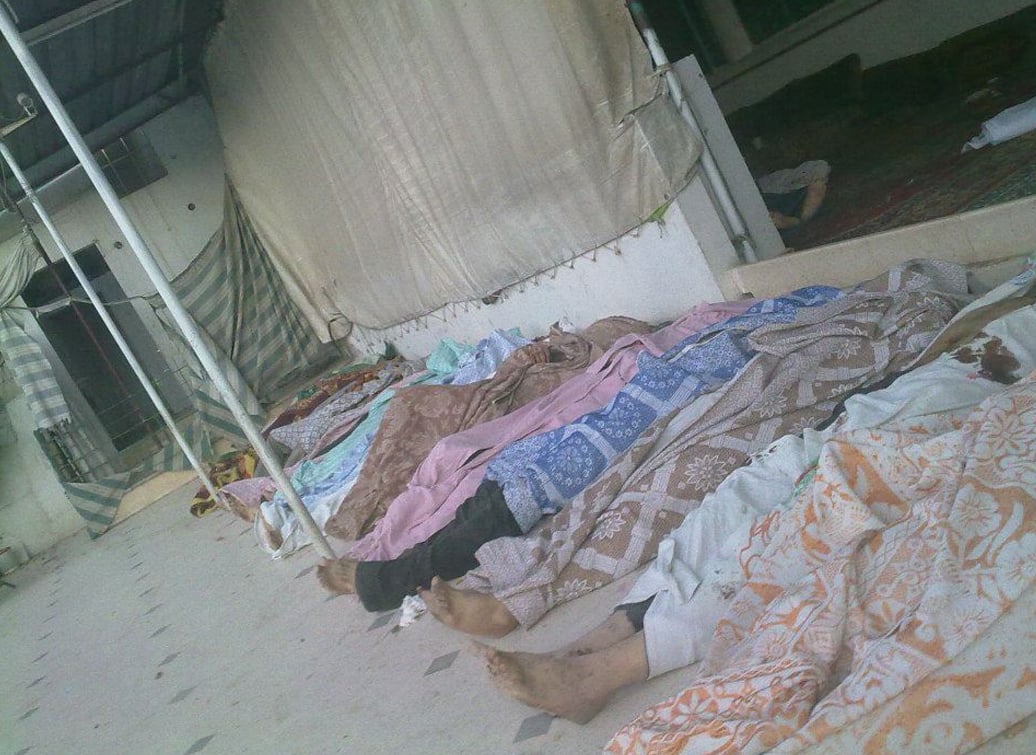
Incident details:
On the morning of Friday March 9, 2012, Syria army forces along with Shabiha members from neighboring pro-Syrian regime neighborhoods, surrounded the Ashira neighborhood in Homs.
As has become a terrible norm in such atrocities, the first phase was heavy bombing which lasted for about 18 hours, killing dozens and leaving an uncountable number of wounded. The bombing also extended to al Refa’ei and al Adawiya neighborhoods, according to a survivor who we spoke with following his long recovery from near-fatal wounds sustained in the bombardment. This survivor, who still lives in Homs city at the time of writing, was one of a number of witnesses who provided us with testimonies of what happened during that time in the weeks following the incident.
Most of the residents, mostly women and children, tried to flee the bombing; however, Syrian regime forces targeted them as they fled, killing 22 women, and 13 children of them as they tried to escape.
On the morning of Sunday 11, after the bombing ended, Syrian Regime army forces launched a ground invasion of the neighborhood with tanks, armored vehicles and every kind of weapon. They were accompanied by hundreds of Shabiha mercenaries. The storming of homes and the mass killings of men, women and children began immediately. Many residents were raped before being slaughtered, often with knives or machetes.
After the frenzy of killing was over, the soldiers and shabiha went through the neighbourhood searching for any survivors, shooting anyone who appeared to be breathing at point-blank range in the head and chest. Many of the bodies were loaded into trucks and taken away.
As though this trauma were not unbearable enough for the victims’ surviving families and friends in other areas, activists who entered the neighbourhood after the soldiers and shabiha left were able to document only a fraction of the carnage that had taken place there due to the massive destruction inflicted by the regime’s tanks, which had demolished walls as regime forces slaughtered residents and raped women. Many of the bodies remained undetected in their homes until they began to rot and the full scale of the terrible crimes carried out there became apparent.
We, at the Syrian Network for Human Rights, were unable to document what had happened until after a long time had passed, piecing together the terrible events from the harrowing testimonies of survivors or family members.
Um Mohammad, a resident of the Karm al Zaitoun neighborhood, who lost 15 members of her family in the massacre said:
“On the day that al Refa’ei (Karm al Zaitoun) neighborhood massacre happened on March 11, 2012, I was in al Nabk to get the relief support for my family and I returned from there to a village outside Homs where my eldest son lived as I couldn’t get into the city because of the security situation that day. When I reached my son’s home, I heard about the massacre that took away 15 of my sons, their wives and my grandsons. I went crazy. In the morning I went to the military hospital in al Wa’er area, and at the door I met an officer who treated me disrespectfully and didn’t allow me to search for the bodies of the members of my family.
And so, I went with many women who lost their children – there were about 10 of us – to the criminal security [department], and when we got inside the branch they showed us images of the victims of the massacre. I identified my children, my sons, their wives, and my grandsons – all of them, they were nine children and six women.


